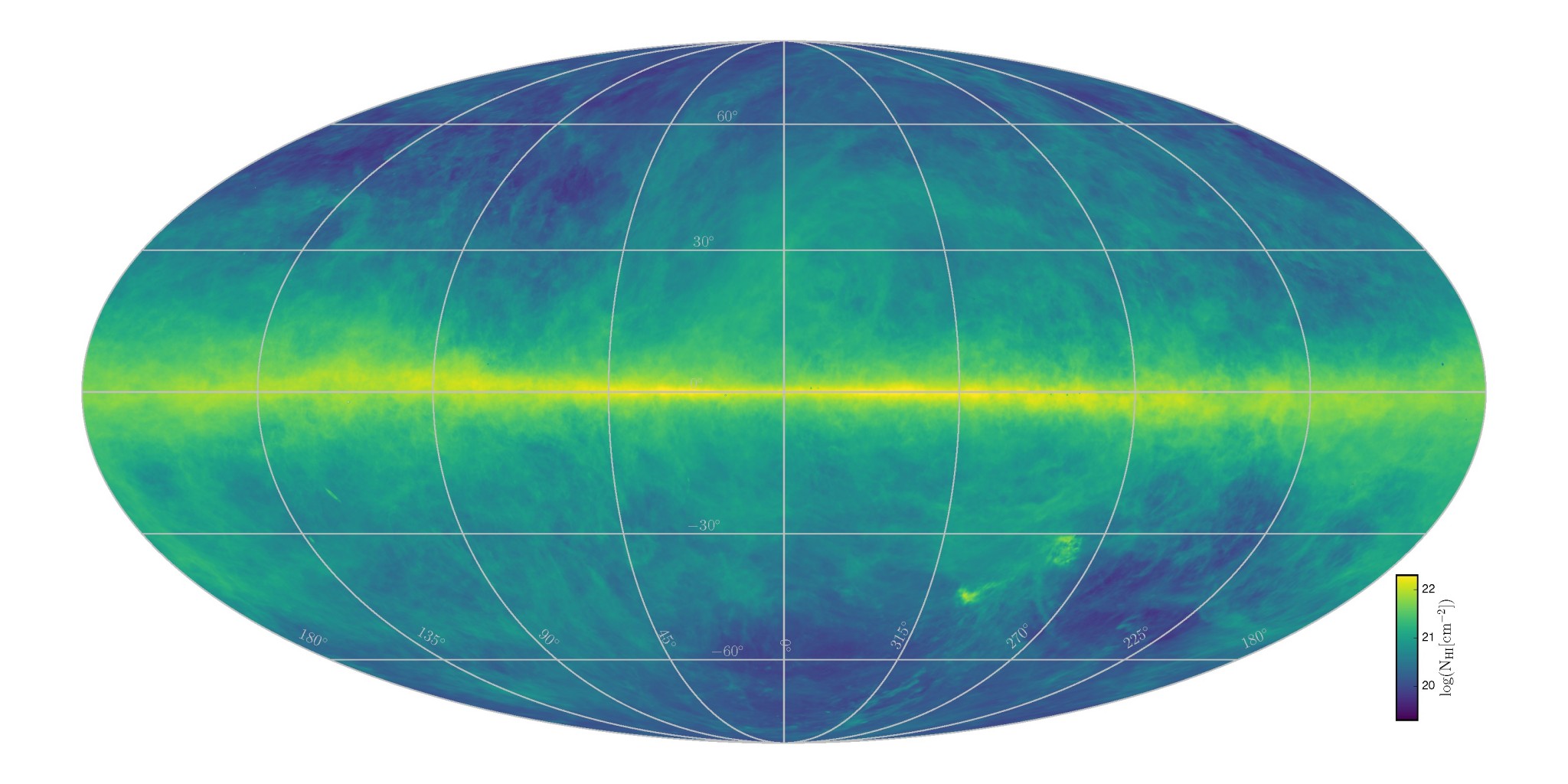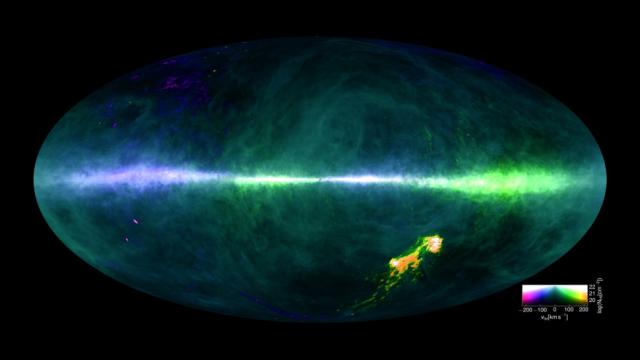Using two of the world’s largest configurable telescopes, scientists have created the most detailed map yet of hydrogen atoms the Milky Way.
The HI4PI map. The colours reflect the approaching (purple/blue) and receding (orange/green) hydrogen gas velocities relative to Earth, while the brightness corresponds to the amount. The plane of the Milky Way runs horizontally across the middle, and the splotches at the lower right are the Magellanic Clouds. (Image credit: Benjamin Winkel and the HI4PI collaboration)
It’s called the HI4PI map, and it was produced using data from the Max-Planck radio telescope in Germany, and the CSIRO radio telescope in Australia. The stunning image was compiled from more than a million individual observations, and approximately 10 billion individual data points.
To make the map, the researchers looked at neutral atomic hydrogen — the most abundant element in the cosmos, and the main component of stars and galaxies. As the researchers point out in their new study, which now appears at Astronomy and Astrophysics, the project improves the previous galactic map by a factor of two in terms of sensitivity and a factor of four in terms of resolution.

Brighter regions represent more total hydrogen content. (Image: Benjamin Winkel and the HI4PI collaboration)
Creating the map came with its challenges. Radio “noise” caused by mobile phones and broadcast stations crept into the data, requiring the ICRAR researchers to develop a sophisticated computer algorithm that cleaned each individual data point. As University of Bonn astronomer Juergen Kerp pointed out in a release, “Next to the thousands of observing hours an even larger amount of time has been spent creating the final scientific data product released today.”
Using the map, the researchers were able to discern features in the Milky Way that had previously eluded detection, particularly structures between stars. “Tiny clouds become visible that appear to have fuelled star formation in the Milky Way for billions of years,” noted Lister Staveley-Smith from ICRAR. “These objects are too dim and too small to be detected even in the other galaxies closest to us.”
The new map — with its clearer picture of hydrogen — will help astronomers understand the chemical makeup of not just our own galaxy, but of others as well. Ultimately, it could answer the question of how our galaxy gets the gas it needs to keep building new stars, and where dwarf galaxies might exist in our immediate neighbourhood.
